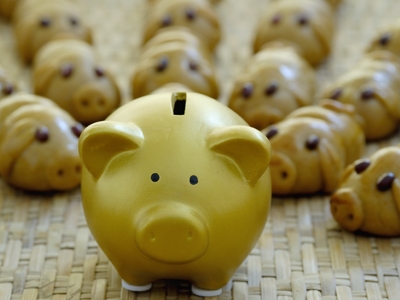
As 1Q 2012 GDP picks up, could the worst be over for Korea?
Strong capital investments and government stimulus boost the economy, but consumption must pick up to sustain recovery.
Household consumption growth is at 1.5% y-o-y in 1Q 2012 in contrast to its ten-year average of 3.2%. Additionally, the Bank of Korea is also likely to keep rates on hold at 3.25% before delivering a 25bp hike in 4Q 2012.
Here's more from the HSBC Global Research:
Korean growth looks poised for a recovery in 2012. The sequential upturn in 1Q 2012's print from the previous quarter reflects stabilising business conditions and a strong government stimulus package. But don't be caught off guard. Household consumption remains weak and needs to pick up for growth to be sustained, especially as public spending eases in the second half of the year. HSBC maintains call for the Bank of Korea to support growth by keeping rates low at 3.25%, before delivering a hike in 4Q.
Korea 1Q 2012 GDP grew 2.8% y-o-y, slightly higher than what HSBC reportedly expected.
A rebound was reported across the board of key expenditure components. This in effect reversed much of the weak data back in 4Q 2011. The strongest growth was seen in gross fixed capital formation at 5.1% y-o-y, particularly facilities investment, which increased by 9.1% y-o-y.
On a sequential basis, GDP rose by 0.9% q-o-q sa. This is the fastest quarterly pace in a year. By economic activity, the manufacturing sector delivered the highest sequential growth at 2.2% q-o-q sa. Services, too, expanded by 0.9%. A contraction, however, was reported in agriculture, utilities and construction.
Implications
These suggest that March IP figures to be released 30 Apr will likely remain relatively weak, given the tight historical relationship between GDP and IP growth.
There are two key observations from today's readings. First, strong capital investment reflects strengthening business confidence, fuelled by an expansion in new business orders. High sequential growth in the manufacturing sector, too, suggests that the sector is stabilising and is consistent with recent movements in the HSBC PMI readings.
Second, government stimulus is working. Public spending grew at its highest rate since September 2009 and helped support Korean growth. This trend is expected to continue in the second quarter as 60% of the 2012 government's budget is to be front-loaded into 1H 2012.
For growth to be sustained, however, private consumption must pick up meaningfully as only 40% of the government budget will be available in 2H 2012 (assuming no further stimulus packages are unveiled). Current household consumption growth is still well below trend, expanding by 1.5% y-o-y in 1Q 2012 in contrast to its ten-year average of 3.2%. In turn, this places greater importance on improving the labour market, particularly in the primary and secondary sectors.
The Bank of Korea is likely to keep rates on hold at 3.25% for the time being before delivering a 25bp hike in 4Q 2012 when inflation pressures are expected to build up again. For now, growth is stabilising and the strong sequential uptick adds further support to the view that the worse may be over in Korea. External risks remain high, but assuming no severe shocks in global economic conditions, Korea remains on track for a gradual recovery in 2012.
Bottom line
Strong fiscal spending and capital investment is lifting Korean growth. But household consumption must pick up in order to sustain the recovery. This will require further improvements in the labour market.
























 Advertise
Advertise






